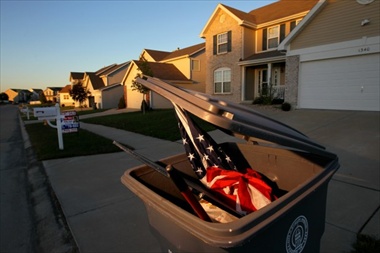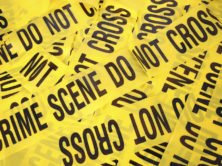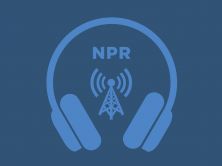
Readers' reaction to David Carson's photo of an American flag in a trashcan triggered Carson's blog on photojournalism ethics. (Photo use granted by David Carson, St. Louis Post-Dispatch)
David Carson, a staff photographer for the St. Louis Post-Dispatch, defended and contextualized his Oct. 7 photo of an American flag in a trash can.
The photo appeared on the front page of the Post-Dispatch and accompanied an article by reporter Jesse Bogan on foreclosures in an O’Fallon subdivision in Missouri.
Carson, who has worked for the Post-Dispatch since July 2000, explained that he took the picture because he “didn’t like” seeing the flag thrown away.
“Part of me was pleased to have found the situation because I knew I could make an image that spoke about the foreclosure mess. I believe the photo does a good job of illustrating the seriousness of the story. For me, it is symbolic of the American dream of home ownership that has fallen to pieces for so many people who have been hit hard during this recession,” Carson wrote in the blog.
In response to his photo, readers have complained, acknowledged its symbolism, and questioned both if Carson staged the photo and Carson’s choice to not remove the flag, he wrote. Most of the feedback, however, “expressed outrage” that Carson took the photo and that it was placed on the front page.
“Seeing [the flag] stuffed into trash to be thrown out with the garbage was an assault on some readers’ values and beliefs,” Carson explained to StinkyJournalism via e-mail. “I understand why the image would be upsetting to them. Insulting readers is never my goal. I do believe it’s important to be sensitive and fair in my coverage, but I won’t shy away from shooting potentially controversial images.”
“If the image triggers an emotional response from the viewer, then I did my job. Given the chance to shoot the image again I would do it exactly the same,” Carson wrote.
But, Carson explained that he, the reporter and the newspaper “meant no disrespect” by taking and publishing the photo.
“As a journalist, I’m bound by ethics to only record and document reality. I never stage it or change it, even after I’m done photographing it,” Carson explained. “There are only rare exceptions when a journalist can and should intervene, like in a life-threatening situation. For example, if I were available to help save a drowning person I’d dive in after them.”
iMediaEthics e-mailed Carson asking what prompted his explanatory blog.
“I thought a blog explaining photojournalism ethics and my thought process in shooting the image would increase people’s understanding of how a journalist works. Plus, people are becoming more and more skeptical of the images they see. I felt compelled to assure readers this image was not staged or Photoshopped to deceive them,” Carson explained.
Carson listed a few high profile cases of Photoshopping by journalists in the past few years, including that of Adnan Hajj, Brian Walski, and Allan Detrich.
“As a photojournalist it’s essential that the images I make are authentic and real. If people can’t look at photo in the paper and trust that what they are seeing is real then a photojournalist has nothing to offer,” Carson wrote.
Among other guidelines, the National Press Photographers Association’s code of ethics advises visual journalists to
- “Be accurate and comprehensive in the representation of subjects” and offer context
- Avoid staging photos or stereotyping
- “While photographing subjects do not intentionally contribute to, alter, or seek to alter or influence events.”
Carson told iMediaEthics he’s been a member of the association “since the early 1990s.” He noted that sometimes subjects offer to stage photos trying to help photographers because “the public is often unaware of the ethics in photojournalism.” He advised that if photographers can’t get a real photo of an event, they should consider taking just a portrait of a subject.
The prevalence of Photoshop and digital photography has introduced new ethical issues to photojournalism, Carson added, noting that because photo editing is so accessible, the public’s “default assumption” often is that every image has been edited.
Hat Tip: Romenesko







Comments Terms and Conditions